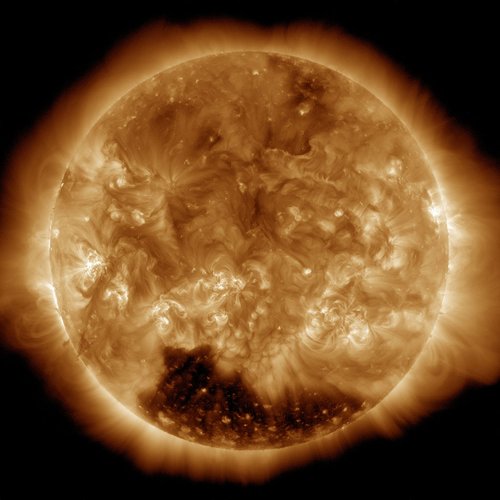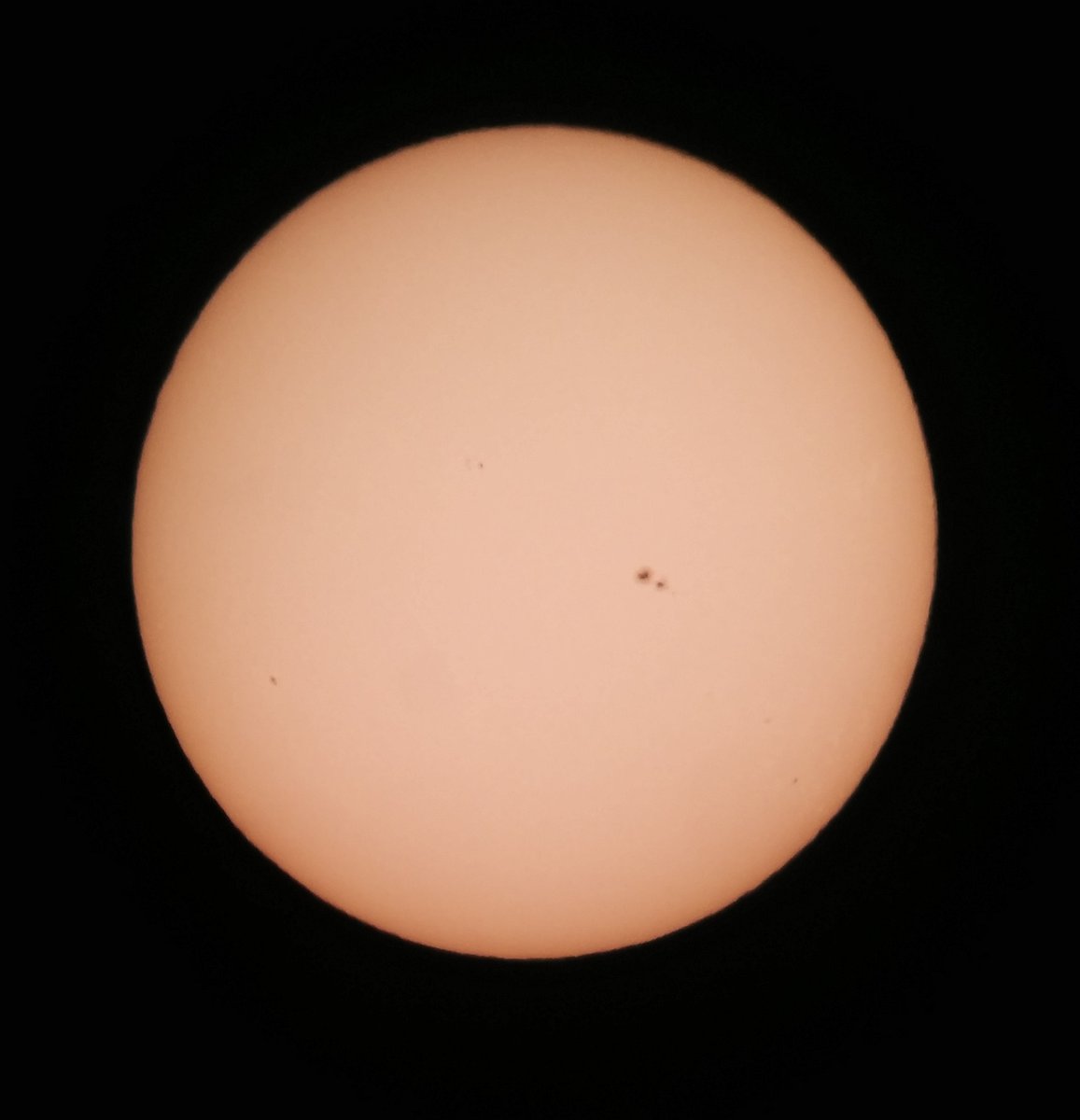Current Info for Observer
as of 05/02/2024 3:16 p.m.
Please login to view current observation details
General Info
as of 05/02/2024 3:16 p.m.
| Type | Star |
| Constellation | Aries |
| Magnitude | -26.80 |
| Right ascension | 2:41:00.87 (Hours) |
| Declination | 15:38:58.4 (Deg) |
| Distance from Earth | 1.00797AU |
| Distance from Sun | 0AU |
| Elongation | 0:00:00.0 |
| Mass | 333,000.0 ⊕ |
Our star, the Sun. | |
☉ Solar Masses ⊕ Earth Masses j Jupiter Masses
Skyview Pro 120mm EQ
100 points
Got a great view and a great image: http://www.astrobin.com/169175/
Orion 10'' SkyQuest dobsonian
100 points
The scope doesn't get a whole lot of vitamin D, so I took it out for a quick solar observation today.
There were 4 sunspot groups visible and many smaller evenly distributed freckles marking the surface. The heat of the direct sunlight made the entire image shimmer, which only added to the effect. A small amount of granulation was visible near the edges of the sun.
Generate a finder chart
The following form will generate a PDF finder chart suitable for printing using to locate objects in the sky with your telescope!
The Date is only really useful for solar system objects, as deep space objects move measurably only on a galactic timescale.
The larger the F.O.V (field of view), the more "zoomed out" the object will appear. It can be helpful to print several charts of the same object with different field of views.
Limiting the magnitude (remember, lower magnitude means brighter!) of stars and objects can make sure your chart is not cluttered with dim objects that you may not be visible to you anyway. The defaults are good, but try experimenting with raising and lowering the values.
Please login to post comments

